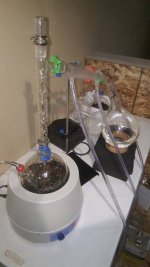BigJohnny
Member
Dirty hoses can do this. Gum rubber absorbs more terps than silione or PTFE and of course, stainless bellows. Try replacing your hoses.
they're basically brand new except for being used earlier this week..... I will be switching to stainless eventually though.
Perhas I should go back to the wire reinforced hose and see what happens.... It never caused me problems even when it was loaded with shit and had pools of terps and junk in it.




